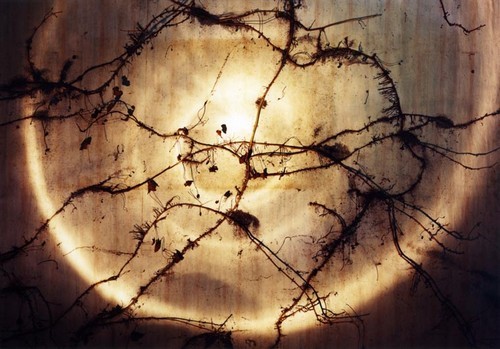Laurenz Berges
01 May - 04 Jul 2009
LAURENZ BERGES
From 1 May to 4 July, Galerie Wilma Tolksdorf is showing new works by Laurenz Berges.
The artist, who studied at Folkwang Schule in Essen and at the Düsseldorf Akademie with Bernd Becher, puts precise observation at the focus of his artistic practice, and he is considered a "chronicler of absence". In his works, space becomes a metaphor for emotions and narrative memories. His photographs work as witnesses of forgotten realities and identities. They help the beholder to experience spaces and sites as well as perceive interior and exterior worlds, making visible borders and transitions, as well as the great variety of spatial contexts.
Laurenz Berges ́ photographs show abandoned and usually visibly run-down buildings and their immediate surroundings. Very dispassionately, he creates beautifully sparse and surprisingly lyrical pictures, usually characterized by shades of grey and brown and taken from a frontal perspective, that seek out traces of life and the everyday past.
Although strictly speaking, Laurenz Berges doesn ́t work in series, conceiving of his photographs as individual pictures, in these new works it is easy to identify motif groups that we can trace throughout his oeuvre: windows that function as metaphorical thresholds, here denying us a view because of curtains and bright daylight (Am Markt and Am Markt II), views of weathered walls bearing marks of furniture removed long ago, close-ups of corner situations that suppress the spatial diminsion (Cappelner Bruch) or seem like abstract, minimalist surfaces (Holz).
From 1 May to 4 July, Galerie Wilma Tolksdorf is showing new works by Laurenz Berges.
The artist, who studied at Folkwang Schule in Essen and at the Düsseldorf Akademie with Bernd Becher, puts precise observation at the focus of his artistic practice, and he is considered a "chronicler of absence". In his works, space becomes a metaphor for emotions and narrative memories. His photographs work as witnesses of forgotten realities and identities. They help the beholder to experience spaces and sites as well as perceive interior and exterior worlds, making visible borders and transitions, as well as the great variety of spatial contexts.
Laurenz Berges ́ photographs show abandoned and usually visibly run-down buildings and their immediate surroundings. Very dispassionately, he creates beautifully sparse and surprisingly lyrical pictures, usually characterized by shades of grey and brown and taken from a frontal perspective, that seek out traces of life and the everyday past.
Although strictly speaking, Laurenz Berges doesn ́t work in series, conceiving of his photographs as individual pictures, in these new works it is easy to identify motif groups that we can trace throughout his oeuvre: windows that function as metaphorical thresholds, here denying us a view because of curtains and bright daylight (Am Markt and Am Markt II), views of weathered walls bearing marks of furniture removed long ago, close-ups of corner situations that suppress the spatial diminsion (Cappelner Bruch) or seem like abstract, minimalist surfaces (Holz).

